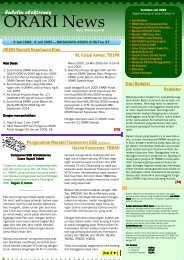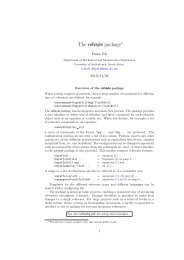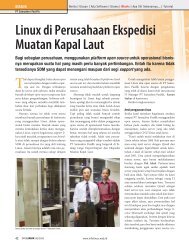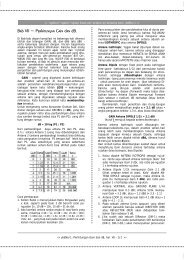Create successful ePaper yourself
Turn your PDF publications into a flip-book with our unique Google optimized e-Paper software.
these voltage variations are smooth sine-wave variations, 180° out<br />
of phase (as the grid voltage rises and becomes more positive,<br />
the anode voltage falls and becomes less positive), as indicated in<br />
Figure 24. Note how these variations center about the d-c anode<br />
voltage and the d-c control grid bias.<br />
Figure 24. Variation of anode and grid voltage<br />
Now let us see how such variations of the anode and grid voltages<br />
of a tube appear on the constant-current curves of a tube. In Figure<br />
25 these variations have been indicated next to the anode voltage<br />
and grid voltage scales of a typical constant current curve. At some<br />
instant of time, shown as “t” on the time scales, the grid voltage<br />
has a value which is the point marked “eg” on the grid-voltage<br />
sine wave. If one finds the point on the tube curves corresponding<br />
to these values (where a line drawn from “eg” and a line drawn<br />
from “ep” cross) he will be at Point A in Figure 25. As the values<br />
of the grid voltage “eg” and anode voltage “ep” vary over the r-f<br />
cycle, Point A moves up and down a line, which in the case of the<br />
normal r-f power amplifier is a straight line. This line is called the<br />
“Operating Line.”<br />
Any point on the operating line (when drawn on constant current<br />
curves as illustrated in Figures 25 or 27) tells the instantaneous<br />
values of anode current, screen current, and grid current which<br />
must flow when these particular values of grid and anode voltage<br />
are applied to the tube. Thus, by reading off the values of the<br />
currents and plotting them against time “t”, one can obtain a curve<br />
of instantaneous values of anode and grid current (Figure 26).<br />
34
















